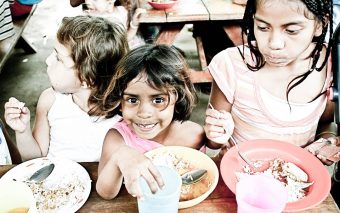In our fight against global warming, energy efficiency is the low-hanging fruit of cutting carbon emissions. It reduces the need to produce more energy and is quick, easy and inexpensive. The goal of ending global hunger by the UN’s target of 2030 must also start with efficiency. That means reducing food waste, which can only happen with refrigerated storage.

In developing countries, 40% of food loss occurs after harvest and early in the supply chain. This translates to more than $310 billion of food waste and loss annually – mostly because of inadequate refrigeration and unreliable and expensive energy supply. Food loss affects producers, reducing their income by at least 15%, and consumers. At the same time, food waste is the third-largest emitter of CO2 globally.
In rural areas of Sub-Saharan Africa and developing Asia, where the electricity grid does not reach or does not work, access to energy – especially decentralized renewable solutions such as solar and hydro-powered mini-grids – is fundamental. Our analysis shows significant productivity increases and food loss decreases if adequate access to energy is provided to rural communities.
Without electricity, there is no cold storage to enable and empower the economic transformation of the lives of 780 million smallholder farmers, who bear the brunt of food waste and are also the most vulnerable to climate change.
Yet many countries have so far failed to fully reform regulations to promote mini-grids and the other distributed renewables that can modernize food chains. This is despite the fact that diesel generators, the current default solution for many farmers, are far more expensive than solar power, not to mention highly polluting.
The International Energy Agency (IEA) states that mini-grids and decentralized renewables are the least costly solution for electrifying the world’s nearly 1 billion people still living without electricity, but government red tape makes obtaining licences and power-purchase agreements for such solutions challenging. Better policies will also help unlock the blended finance needed to reduce risk and entice local commercial banks to enter the market more aggressively. Lastly, achieving a win-win of rural electrification and food refrigeration requires more than technology, policy and finance; it requires an army of entrepreneurs.
Proliferating cold storage by deploying decentralized renewable energy solutions can improve the business case for energy suppliers by increasing demand beyond household consumption. Moreover, by selling more power to improve food production and in particular cold storage, energy users can afford to pay a higher energy tariff, improving the business case of the energy supplier.
The International Energy Agency (IEA) states that mini-grids and decentralized renewables are the least costly solution for electrifying the world’s nearly 1 billion people still living without electricity, but government red tape makes obtaining licences and power-purchase agreements for such solutions challenging. Better policies will also help unlock the blended finance needed to reduce risk and entice local commercial banks to enter the market more aggressively. Lastly, achieving a win-win of rural electrification and food refrigeration requires more than technology, policy and finance; it requires an army of entrepreneurs.
Proliferating cold storage by deploying decentralized renewable energy solutions can improve the business case for energy suppliers by increasing demand beyond household consumption. Moreover, by selling more power to improve food production and in particular cold storage, energy users can afford to pay a higher energy tariff, improving the business case of the energy supplier.
Source: WEF



